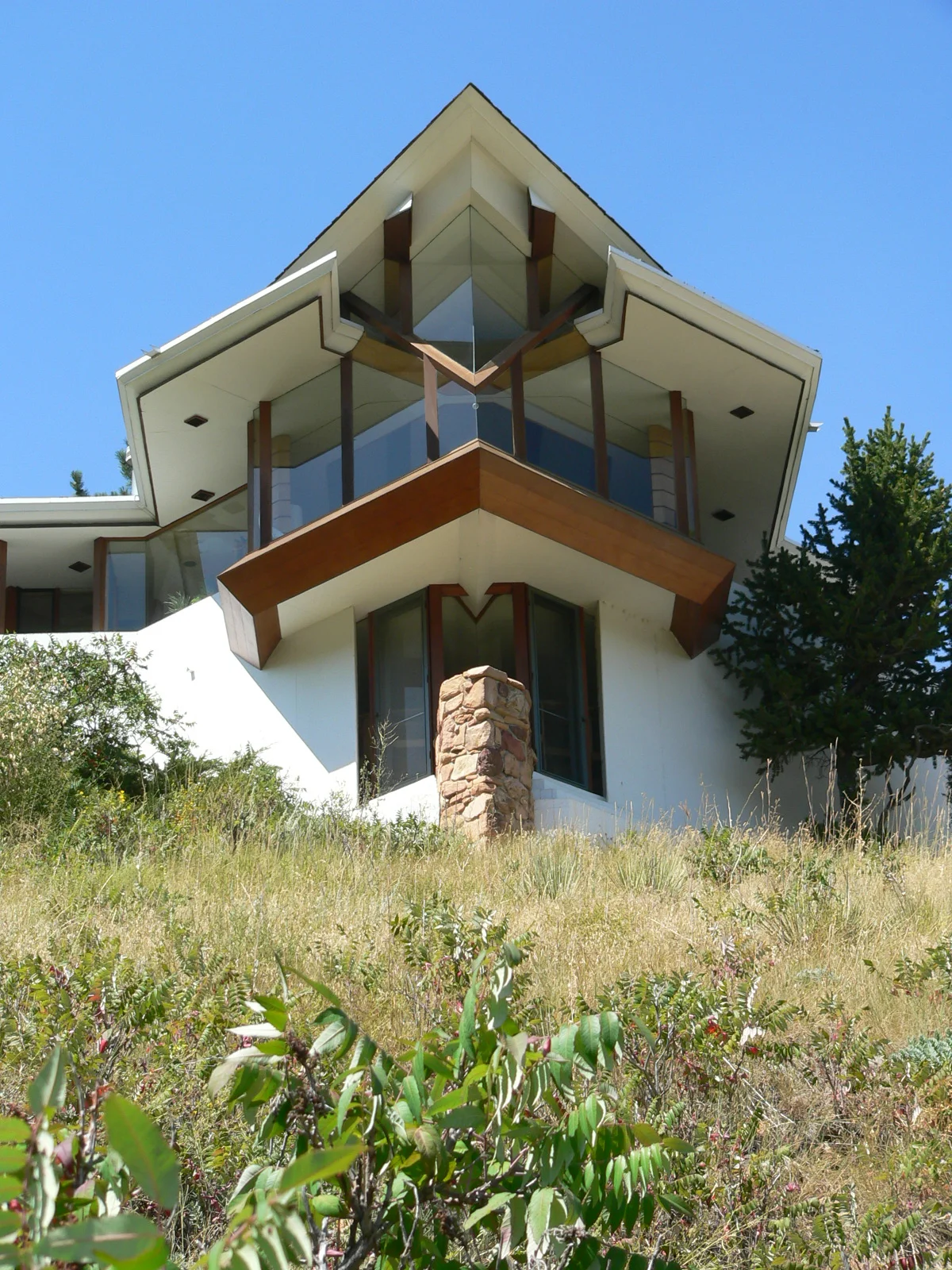In this last post on Charles Haertling’s residential work, I have used the term Regional Modernist to describe a collection of houses that is a bit more difficult to define than his more assertively formal Usonian or Organic houses. In thinking about these houses, I am reminded of Kenneth Frampton’s essay “Critical Regionalism” that attempted to draw some boundaries on aspects of late Modernist architecture that incorporated local references, cultural and climatic, alongside more codified tenets of International Modernism
Charles Haertling, the Organic houses
In this second post on the residential work of Charles Haertling, I wanted to highlight the most formally unconventional works that he executed in and around Boulder. These houses toss out any preconceptions of what a house might look like or function and each one grows out of its steep, unforgiving site to create strongly organic, self-contained worlds unto themselves.
Charles Haertling, the Usonian Houses
This is the first post highlighting the residential work of Boulder architect Charles Haertling.
As I mentioned in a previous post, I have broken the houses down into three gross categories - Usonian, Organic, and Regional Modernist. These are of course just broad labels and no architect’s work can be so easily organized. These categories are certainly not meant to be reductionist but rather my way of thinking about Haertling’s intentions as much as his completed works.
Charles Haertling, Part One
I’ve written quite a bit about Boulder architect Charles Haertling over the nearly 20 years that I have lived in Boulder. His work has been a revelation and inspiration, a gentle reminder from the past to always seek out invention and never fall back to simplistic solutions. This Fall, I have been engaged by a property owner to actually do some work on one of Haertling’s houses, the Matheson House, high atop Marshall Mesa in South Boulder.
Tician Papachristou
Tician Papachristou
Another in a series of posts of some of the remarkable architects that were working in Boulder, Colorado in the 1960s. This was a particularly fruitful time for questioning the received notions of residential design and Boulder's building boom allowed some of the more talented local architects to experiment with new forms, materials and most notably, new sets of relationships between the house and landscape.
Houvenweep and Mesa Verde
I recently took a short trip to a series of amazing Native American settlement sites in south Colorado and Utah. Mesa Verde National Park is the more established, better known, site, located just outside of Cortez, Colorado. This is the location of the iconic cliff dwellings, dramatic masonry construction tucked under massive sandstone overhaning cliffs





